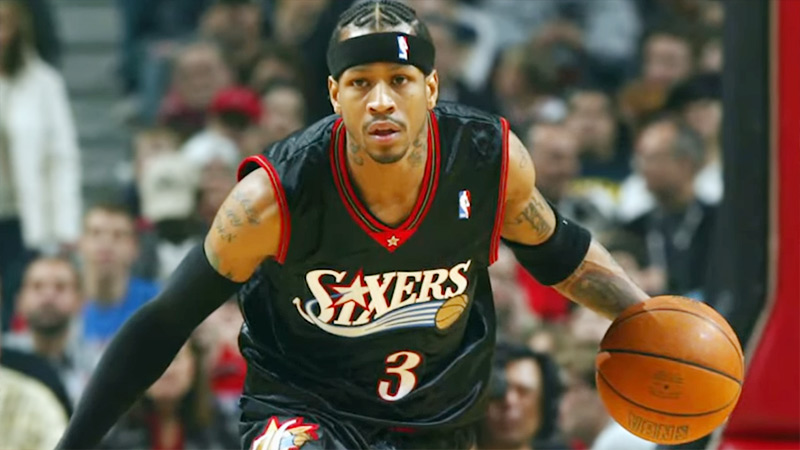Basketball players are known for their unique attire, which includes jerseys, shorts, and, sometimes, an additional accessory: sleeves. These sleeves, often made of compression material, have become increasingly common on the court.
But why do basketball players wear sleeves? In this blog post, we will explore the reasons behind this fashion trend and delve into the benefits and functionality of sleeves in basketball.
Whether you’re a fan of the sport or simply curious about basketball fashion, read on to discover the answers to some frequently asked questions about why basketball players don sleeves.
Why Do Basketball Players Wear Arm Sleeves?
Basketball players often wear arm sleeves as a part of their athletic attire. Arm sleeves are compression garments that cover the arm from the wrist to the upper arm. They are typically made of stretchy and breathable materials like spandex or nylon.
Players wear arm sleeves for various reasons. Some use them for compression, which helps improve blood circulation and reduces muscle soreness. Others wear them for warmth, especially during colder seasons or in indoor arenas with strong air conditioning.
Additionally, arm sleeves can provide a slight level of protection against minor scratches or abrasions during intense gameplay. Ultimately, the decision to wear arm sleeves is a personal preference for many basketball players.
Benefits of Wearing Arm Sleeves for Basketball Players
Wearing arm sleeves can provide several benefits for basketball players. Let’s explore these benefits in detail:
Compression and Muscle Support
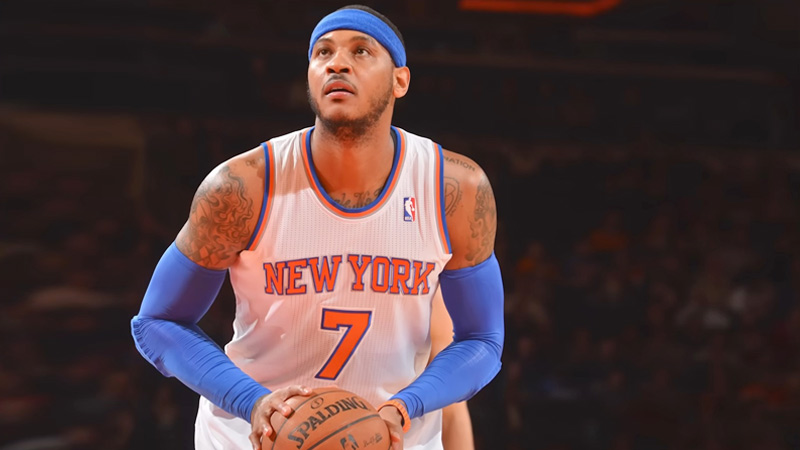
Arm sleeves are designed to provide compression, which helps improve blood flow and oxygen delivery to the muscles. This can aid in reducing muscle fatigue, soreness, and the risk of cramps during intense gameplay.
The compression also provides support to the muscles, reducing the risk of strains and sprains.
Injury Prevention
Arm sleeves offer a layer of protection to the arm, shielding it from minor scratches, abrasions, and bumps that can occur during gameplay. They can also help in preventing sunburn during outdoor games by providing UV protection.
Some players who have had previous arm injuries may also wear sleeves to provide additional support and stability to the affected area.
Improved Warm-Up and Recovery
The compression provided by arm sleeves can help warm up the muscles faster before a game or practice session. The increased blood circulation can contribute to better flexibility and range of motion.
Similarly, wearing arm sleeves post-game or workout can aid in muscle recovery by promoting efficient removal of metabolic waste and reducing post-exercise swelling.
Enhanced Grip and Ball Control
The material of the arm sleeves can offer an improved grip on the basketball. This can be particularly helpful when players are sweating, as the sleeves can absorb moisture and maintain a better grip on the ball.
The added traction can enhance shooting, passing, and dribbling skills, giving players more control over the ball.
Psychological and Style Factors
Arm sleeves can serve as a form of self-expression for players, allowing them to personalize their appearance on the court. Additionally, some players may feel more confident and focused when wearing arm sleeves, attributing psychological benefits to the attire.
It’s important to note that while arm sleeves offer potential benefits, their effectiveness may vary from player to player.
Personal preference, comfort, and individual needs should be taken into consideration when deciding to wear arm sleeves during basketball activities.
When Do Basketball Players Avoid Wearing Arm Sleeves?
While arm sleeves can provide several benefits, there are situations where basketball players may choose to avoid wearing them. Here are a few scenarios where players might opt not to wear arm sleeves:
Official Rules and Regulations

In some leagues or competitions, there may be specific rules regarding the use of accessories or attire. These rules might prohibit the use of arm sleeves or have restrictions on their design, color, or length.
In such cases, players are required to adhere to the regulations and may have to forego wearing arm sleeves.
Personal Comfort and Preference
Every player has their own comfort level and preference when it comes to wearing accessories during gameplay. Some players may find arm sleeves restrictive, uncomfortable, or overly warm.
If wearing arm sleeves hinders their movement, causes discomfort, or affects their performance, they may choose to play without them.
Climate and Temperature
In hot and humid environments, wearing arm sleeves can trap heat and increase body temperature, potentially leading to discomfort and excessive sweating.
In such conditions, players may choose to forgo arm sleeves to keep their arms cooler and prevent overheating.
Rehabilitation and Injury Management
While arm sleeves can provide support and compression for minor injuries, players with more severe or specific arm injuries may require specialized braces, wraps, or bandages prescribed by medical professionals.
In these cases, players might avoid wearing arm sleeves as they may not provide the necessary support or functionality required for their specific injury.
Team Uniform Guidelines
Basketball teams often have specific uniform guidelines that players must follow, including regulations on accessories.
If the team’s uniform policy prohibits the use of arm sleeves or has restrictions on their design or color, players may have to refrain from wearing them during games or official team events.
The decision to avoid wearing arm sleeves is subjective and depends on factors such as personal preference, league regulations, climate, injuries, and team policies.
Why Do Basketball Players Wear Leg Sleeves?
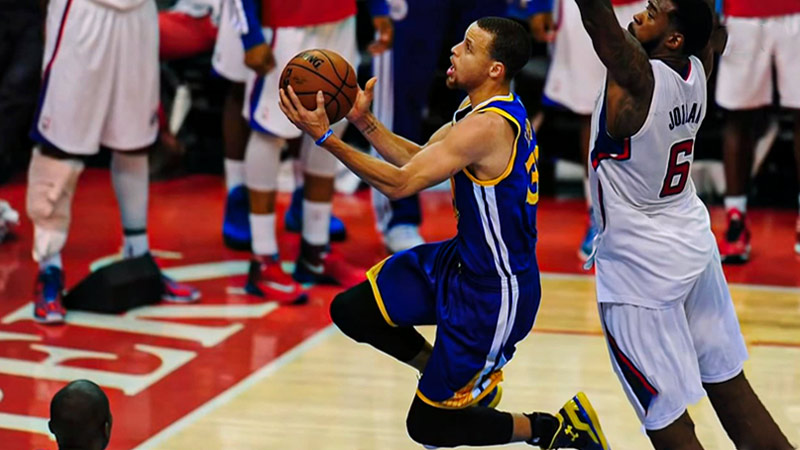
Besides, arm sleeves, many basketball players choose to wear leg sleeves during games. Leg sleeves are compression garments that cover the lower leg, typically from the knee down to the ankle.
These sleeves provide various benefits to players, such as improved blood circulation, muscle support, and reduced risk of injuries like shin splints or calf strains.
Additionally, leg sleeves can help keep the leg muscles warm during play and may offer a psychological advantage by boosting a player’s confidence.
While not all basketball players wear leg sleeves, they have become a common accessory among athletes in the sport due to their potential performance and recovery benefits.
Benefits of Wearing Leg Sleeves for Basketball Players
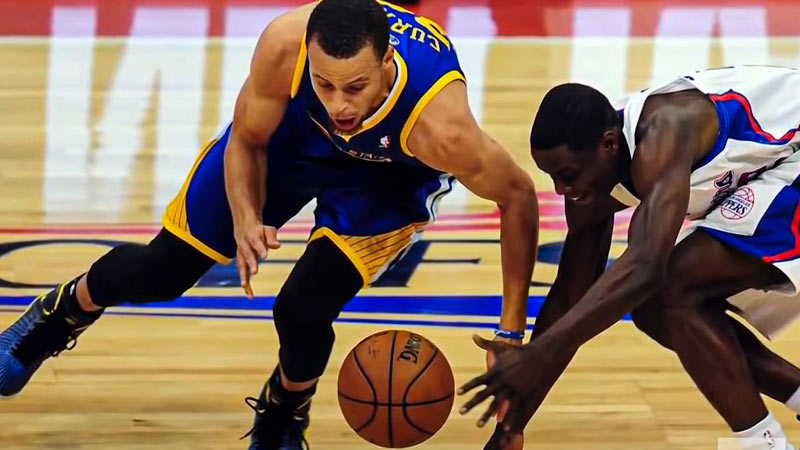
Wearing leg sleeves can provide several benefits for basketball players. Let’s explore the advantages of wearing leg sleeves in detail:
Compression and muscle support
Leg sleeves offer compression to the lower leg muscles, including the calves and shins. The compression helps to improve blood circulation, enhancing oxygen delivery to the muscles.
This increased circulation can reduce muscle fatigue and soreness during intense physical activity, allowing players to perform at their best for longer periods.
Injury prevention
Leg sleeves provide support to the muscles, tendons, and ligaments in the lower leg, reducing the risk of injuries such as shin splints, calf strains, and muscle cramps.
The compression helps stabilize the leg muscles, minimizing excessive movement and vibrations that can lead to overuse injuries.
Enhanced recovery
The compression provided by leg sleeves can aid in post-workout or post-game recovery. By improving blood flow and reducing inflammation, leg sleeves can help speed up the removal of metabolic waste products and promote the delivery of nutrients to the muscles.
This can potentially reduce muscle soreness and promote faster recovery between training sessions or games.
Joint stability
Leg sleeves can provide additional support to the knee joint, which is crucial in basketball due to the frequent jumping, cutting, and landing movements involved.
The compression and stability offered by leg sleeves can help reduce the risk of knee injuries, such as sprains or ligament damage, by providing support to the surrounding muscles and tendons.
Thermal regulation
Leg sleeves can help regulate the temperature of the leg muscles during games or practices. They can help keep the muscles warm in colder environments, improving flexibility and reducing the risk of strains.
On the other hand, in warmer conditions, leg sleeves made from moisture-wicking materials can help absorb sweat and aid in cooling the legs by facilitating evaporation.
Protection
Leg sleeves act as a protective barrier against minor cuts, scrapes, and abrasions on the legs. During basketball games, players often come into contact with other players, the basketball, and the court, making them susceptible to such injuries.
Leg sleeves can help minimize the impact of these contacts and reduce the likelihood of skin injuries.
Psychological advantage
Similar to arm sleeves, wearing leg sleeves can provide a psychological advantage to basketball players. They may boost a player’s confidence and provide a sense of readiness and focus on the court.
Additionally, leg sleeves can be a way for players to express their personal style and identity, adding to their overall mental state and motivation.
It’s important to note that the effectiveness of leg sleeves may vary from player to player. Some individuals may find significant benefits from wearing leg sleeves, while others may not experience the same level of advantage.
Ultimately, the decision to wear leg sleeves depends on the player’s comfort, personal preference, and perceived benefits.
When Do Basketball Players Avoid Wearing Leg Sleeves?
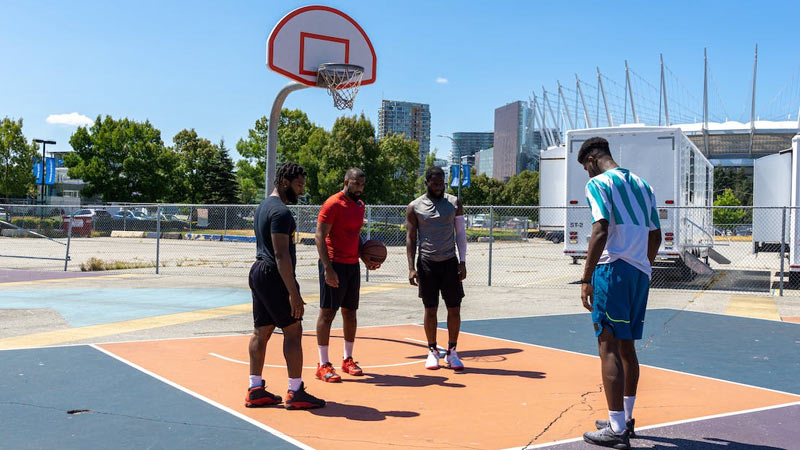
While leg sleeves offer various benefits for basketball players, there are situations when players might choose to avoid wearing them. Here are some instances when basketball players might opt not to wear leg sleeves:
Personal discomfort
Not all players find leg sleeves comfortable to wear. Some individuals may feel restricted or uncomfortable with the compression or fit of the sleeves.
In such cases, players may choose to forgo leg sleeves to maintain their comfort and freedom of movement on the court.
Warm weather conditions
In hot and humid environments, wearing leg sleeves may cause excessive heat retention and discomfort for players. As a result, some players may choose to omit leg sleeves to allow for better temperature regulation and prevent overheating.
League or team regulations
Like any other accessory, leg sleeves may be subject to rules and regulations set by basketball leagues or teams. Players may be required to adhere to uniform guidelines that prohibit or restrict the use of leg sleeves.
In such cases, players must comply with the regulations and abstain from wearing leg sleeves during games or official competitions.
Shooting preference
Some basketball players have developed shooting techniques that involve contact with the legs or rely on the feel of the bare leg against the basketball.
Wearing leg sleeves may interfere with the tactile feedback and muscle memory involved in shooting, causing some players to opt for sleeveless attire.
Personal preference or superstition
Just like with any piece of equipment or accessory, some players may have personal preferences or superstitions that lead them to avoid wearing leg sleeves.
They may have tried leg sleeves in the past and not experienced any noticeable benefits or simply feel more comfortable without them. Individual player rituals and routines can influence their choice of attire.
Injury rehabilitation
In cases where a player is recovering from a lower leg injury, wearing leg sleeves may not be recommended during the rehabilitation process.
Medical professionals may advise against using leg sleeves to allow for a more thorough assessment of the injury, facilitate targeted rehabilitation exercises, or minimize external factors that could impede the healing process.
The decision to wear or avoid leg sleeves rests with the individual player. Different players have different preferences, comfort levels, and needs.
It’s important to consider factors such as personal comfort, weather conditions, and any specific regulations or requirements set by leagues or teams when deciding whether to wear leg sleeves.
FAQs
Do basketball players wear sleeves for style or functionality?
While basketball sleeves may enhance a player’s appearance, they are primarily worn for their functional benefits. The compression material used in sleeves can provide support to the muscles, help improve circulation, and potentially reduce muscle fatigue during games.
Style might be a secondary consideration, but functionality remains the main reason behind their usage.
Do sleeves provide any protection against injuries?
Basketball sleeves are not designed specifically for injury prevention, but they can offer a certain degree of protection. Sleeves can help keep the arm muscles warm, which may reduce the risk of strains or pulls.
Additionally, sleeves can provide a layer of protection against minor cuts, abrasions, and floor burns, common occurrences in the fast-paced and physical nature of basketball.
Are there any performance benefits associated with wearing sleeves?
Wearing sleeves during a basketball game can potentially provide performance benefits to players. The compression material of the sleeves can offer a snug fit, which may improve proprioception (awareness of one’s body position) and enhance the player’s overall feel for the ball.
The compression can also help reduce muscle oscillation and improve muscle efficiency, potentially leading to enhanced performance on the court.
Are sleeves worn by basketball players for psychological reasons?
Psychological factors can play a role in a player’s choice to wear sleeves. Some athletes believe that sleeves provide a mental edge by creating a sense of confidence or invincibility.
Wearing a sleeve might also serve as a personal style statement or a way to differentiate oneself on the court. However, it’s important to note that psychological reasons alone are not the primary motivation for wearing sleeves.
Do sleeves offer any advantages during post-game recovery?
Basketball players often wear sleeves not only during games but also in the post-game recovery phase. The compression provided by the sleeves can help reduce swelling, aid in muscle recovery, and promote better circulation.
By wearing sleeves after games, players may experience a faster recovery time, allowing them to bounce back more quickly for their next performance.
Wrapping Up
Basketball sleeves have become a common sight on the court, and they serve both functional and stylistic purposes for players.
While offering support, protection, and potential performance benefits, sleeves have also gained popularity as a fashion statement among basketball enthusiasts.
Whether players wear them for the functional advantages they provide or the psychological boost they offer, basketball sleeves have undoubtedly become an integral part of the sport’s attire.
So, the next time you watch a basketball game, take note of the players’ sleeves and appreciate the multifaceted reasons behind their presence on the court. Best of luck.

